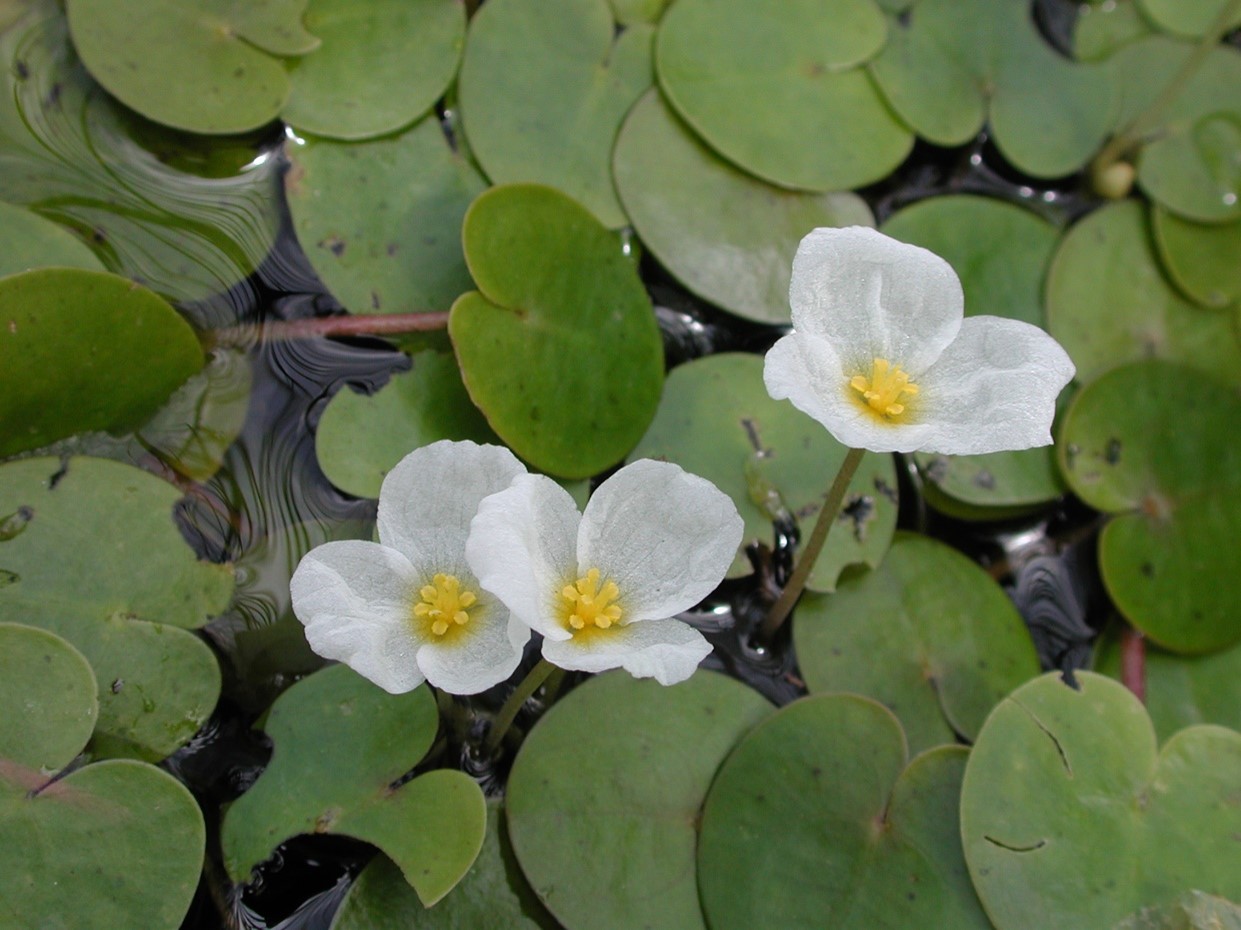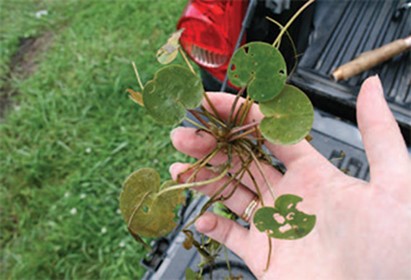European frog-bit
Learn more about European frog-bit, an aquatic invasive plant, and how you can help prevent the introduction and spread of this species.
What Ontario is doing
To prevent the further spread of this unwanted invader in the province, Ontario has regulated European frog-bit (Hydrocharis morsus-ranae) as a prohibited invasive species under the Invasive Species Act, 2015.
Learn about the Invasive Species Act and regulations.
Background
European frog-bit is a non-native aquatic plant that resembles many native waterlilies found in Ontario. Preferring calm waters over a wide range of nutrient and pH levels, these plants are commonly found in habitats such as ponds, wetlands, and slow-flowing rivers.
This species can quickly spread naturally through its rapid growth or by dispersal of floating plants via water currents and waves. Humans can bring these plants to new waterbodies by watercraft or by the improper disposal of bait bucket contents, aquariums, or water gardens.
Range
Native to Europe and parts of Asia and Africa, European frog-bit has spread to many Canadian waterways including the St. Lawrence River, Lake Ontario, Lake Erie, and other lakes and rivers in south central and southwestern Ontario. It is also established in several American states such as New York and Michigan.
View For an up-to-date distribution map of European Frog-bit in North America.
Impacts of European frog-bit
Capable of producing dense mats of floating vegetation, European frog-bit can outgrow native plant species and reduce the available light for submerged plants.
Large areas of these plants may die and decompose in the fall, reducing the water’s oxygen levels and negatively impacting aquatic life.
Densemats can clog drainage canals and irrigation systems, potentially damaging crops and can also interfere with recreational activities such as boating and swimming.
How to identify European frog-bit
- Heart shaped leaves that float on the water’s surface 2-5 cm wide.
- Unlike native water lilies, European frog-bit will grow small white flowers (about 2 cm) with three white petals and a yellow center.
- Can be free floating or be rooted in shallow water.
What you need to know
- Learn how to identify European frog-bit and how to prevent the introduction or spread of this plant into local waterways.
- It is illegal to transport, deposit, release or bring European frog-bit into a provincial park or conservation reserve in Ontario.
- Always clean, drain, and dry your watercraft (boat, canoe, etc.) if removing it and transporting it to another waterbody. As of Jan. 1, 2022, boaters must open or remove drain plugs and other devices to allow water to drain, and take reasonable measures to remove plants, animals and algae from their watercraft, watercraft equipment and trailer before transporting it overland. In addition, boaters must ensure watercraft, watercraft equipment and trailers do not have aquatic plants, animals, or algae attached to it before arriving at a launch site or placing the watercraft into any waterbody.
Reporting illegal activity
If you have any information about the illegal importation, distribution, or sale of European frog-bit, report it immediately to either:
- the ministry at
1-877-847-7667 , toll-free anytime - Crime Stoppers anonymously at
1-800-222-TIPS (8477)
If you’ve seen European frog-bit or another invasive species in the wild, please:
- contact the toll free Invading Species Hotline at
1-800-563-7711 - visit EDDMapS Ontario
- search for the ‘Invasive Species in Ontario’ project on iNaturalist.org to report a sighting
Gallery
European frogbit floating leaves and flowers. Photo: Wasyl Bakowski, MNR
Heart-shaped leaves. Photo: OFAH

